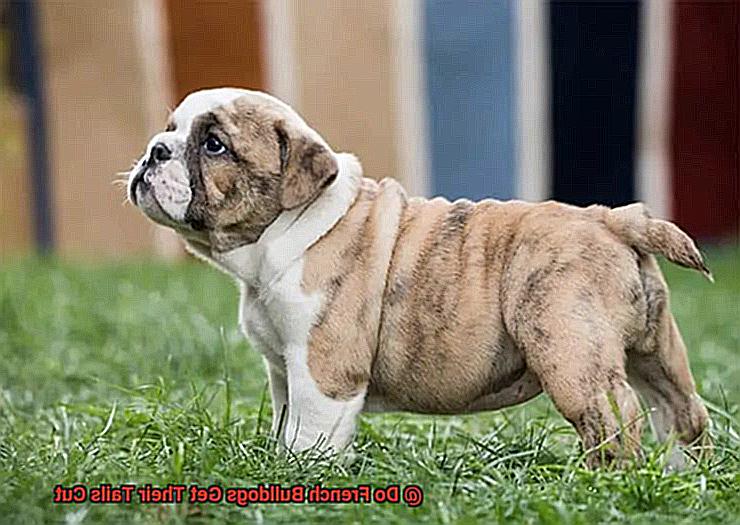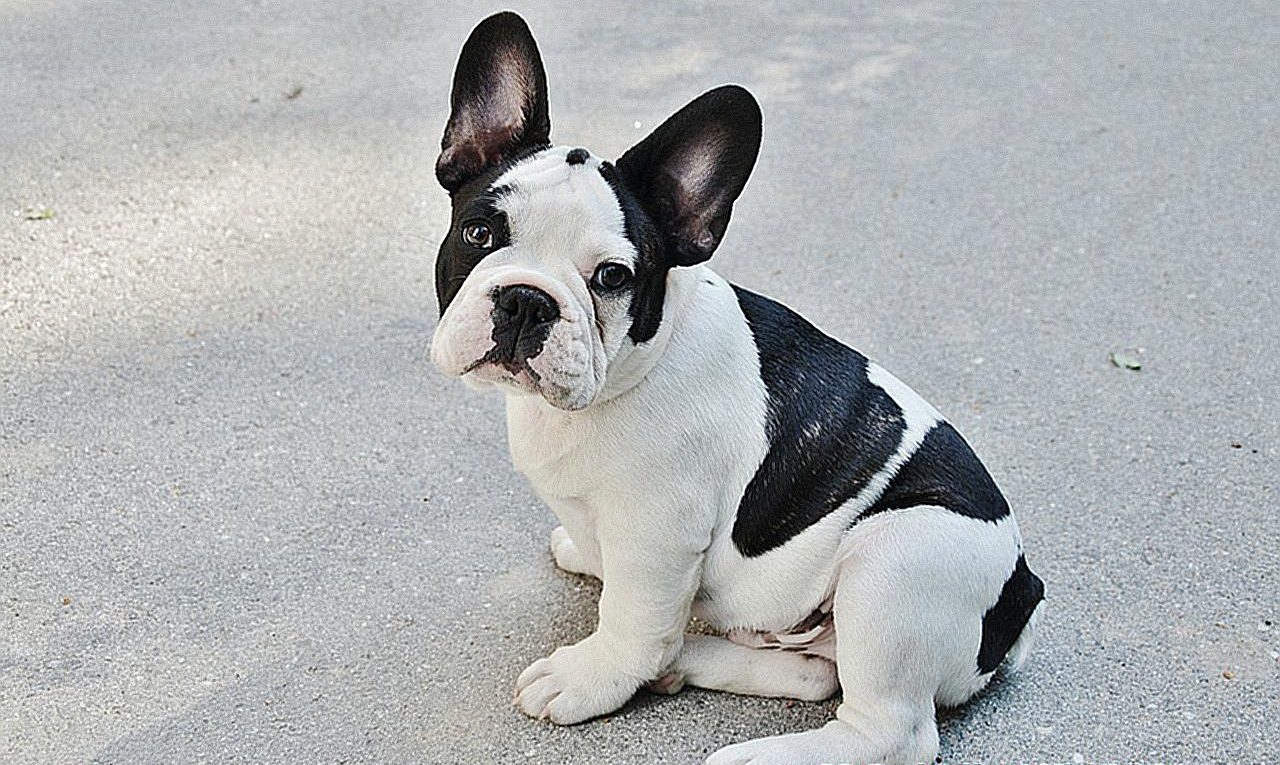Do French Bulldogs Get Their Tails Cut?
Tail docking, the hotly debated practice of snipping a dog’s tail, has sparked passionate discussions for years. And when it comes to French bulldogs, those adorable bundles of cuteness and charm, this contentious issue is no exception. As proud owners and enthusiasts of these beloved companions, it’s essential to explore the history and implications of tail docking in French bulldogs while considering the ethical side.
Originally, tail docking served practical purposes—preventing injuries during hunting or work. But over time, it morphed into a matter of breed standards and cosmetic preferences. While opinions and regulations on this practice differ worldwide, let’s approach this topic with an open mind.
Ethics play a significant role in discussing tail docking. Critics argue that removing a dog’s tail is merely a cosmetic procedure that infringes on their natural appearance rights. Moreover, the process itself can cause pain and discomfort for our furry friends, sometimes leading to complications during healing.
Different countries have varying regulations on tail docking. In France, for instance, docking is strictly prohibited; other nations impose specific conditions and restrictions. Supporters claim that tail docking can be beneficial in certain situations where tail injuries are more likely. However, opponents stress the importance of preserving a dog’s physical appearance without unnecessary alterations.
In this blog post, we’ll objectively delve into the practice of tail docking in French bulldogs. We’ll explore its historical origins, examine different countries’ stances on the matter, and dive into the underlying ethical considerations at play. By weighing both sides of the debate, we aim to equip French bulldog enthusiasts with a comprehensive understanding of this controversial procedure and its impact on our beloved four-legged pals.
Stay tuned as we navigate this complex topic together—uncovering historical context and contemporary debates surrounding tail docking in French bulldogs. With our dogs’ well-being at heart, let’s make informed decisions that prioritize their health and happiness while fostering a respectful and compassionate bond with our furry companions.
What is the Natural Tail of a French Bulldog?
Contents [show]
French Bulldogs are beloved for their adorable appearance, expressive faces, and unique tails. In this article, we will delve into the natural tail of a French Bulldog, its characteristics, purpose, and why it should never be docked or cut. Whether you already have a French Bulldog or are considering getting one, understanding their natural tail is essential for responsible ownership.
The Characteristics of a French Bulldog’s Tail:
The natural tail of a French Bulldog is typically short and straight, with a distinctive twist or bend known as a “screw” tail. While the length may vary slightly from dog to dog, it is generally considered on the shorter side. The tail should ideally be free from kinks or abnormalities and set low on the body, carried in a horizontal position.
The Purpose of the Natural Tail:
- Balance and Coordination: A French Bulldog’s tail plays an important role in maintaining balance and coordination. It enables them to make quick turns and changes in direction, enhancing their agility and maneuverability.
- Communication: Just like their expressive faces, French Bulldogs use their tails to communicate various emotions and intentions. A wagging tail signifies happiness or excitement, while a tucked or still tail may indicate fear or anxiety. By paying attention to their tail language, owners can better understand their furry friend’s emotional state.
Why Docking Should Never Be Considered:
Tail docking, the surgical removal of a portion of a dog’s tail, is unnecessary and cruel. It is important to note that docking procedures are banned in many countries for ethical reasons. Responsible breeders prioritize the health and well-being of their dogs and do not engage in tail docking practices.
Health Issues Related to French Bulldog Tails:
French Bulldogs have a higher risk of developing certain tail-related health issues, such as hemivertebrae. This condition causes malformation of the vertebrae in the tail and can lead to pain and discomfort. In severe cases, tail amputation may be recommended by a veterinarian to alleviate suffering and improve the dog’s quality of life. However, this is only considered as a last resort and is not a common practice for French Bulldogs.
Caring for Your French Bulldog’s Tail:
Regularly inspect your French Bulldog’s tail for any signs of discomfort or health issues. If you notice any redness, swelling, or unusual behavior, consult your veterinarian for a thorough examination. Regular veterinary check-ups are essential for identifying potential problems early on and ensuring the overall well-being of your furry companion.

Potential Health Issues Related to French Bulldog Tails
French Bulldogs are known for their adorable curly tails, but did you know that these unique tails can sometimes lead to health issues? In this section, we will explore the potential health problems associated with French Bulldog tails and provide tips on how to keep your Frenchie’s tail happy and healthy.
Hemivertebrae: A Twisted Tale
One potential health issue related to French Bulldog tails is a condition called hemivertebrae. This occurs when one or more vertebrae in the tail are deformed or malformed. Hemivertebrae can cause pain and discomfort for your furry friend and may lead to symptoms such as difficulty walking, incontinence, and even paralysis in severe cases. If your Frenchie is diagnosed with hemivertebrae, surgery may be required to correct the condition. However, it’s important to note that surgery can be costly and risky.
The Twist of a Screw Tail
Another potential health issue related to French Bulldog tails is a condition called screw tail. This occurs when the tail is twisted or kinked, often due to genetic factors or improper breeding practices. A screw tail can cause problems such as skin irritation, infections, and difficulty keeping the tail clean. In some cases, surgery may be necessary to correct the twisted tail and alleviate any associated health issues.
Watch Out for Tail Injuries
French Bulldogs with longer tails are more prone to injuries such as fractures or dislocations. Their tails can easily get caught in doors or furniture, leading to painful injuries that may require medical attention.

Additionally, longer tails in French Bulldogs can make them more susceptible to tail injuries during physical activities or rough play with other dogs. These injuries can range from minor bruises or sprains to more serious fractures or nerve damage.
To prevent tail injuries, it’s important to take extra precautions. Keep your Frenchie’s environment safe and free from potential hazards. Use protective measures such as tail guards during physical activities or when your Frenchie is playing with other dogs. Furthermore, monitor your dog’s behavior to prevent rough play that could result in tail injuries.
Regular Vet Check-ups are a Must
Regular veterinary check-ups are essential for French Bulldogs with longer tails. Your vet will be able to monitor your Frenchie’s tail health and detect any potential issues early on. Early detection and intervention can help prevent or manage these issues more effectively.
Responsible Breeding Practices
Lastly, it’s crucial for French Bulldog owners to understand the potential health risks associated with longer tails and make informed decisions about breeding practices. Responsible breeders prioritize the health and well-being of their dogs, including considering the potential health issues related to tail length when selecting breeding pairs.
Is Tail Amputation Common for French Bulldogs?
French Bulldogs are undeniably adorable with their unique appearance, including their short and stubby tails. But are tail amputations common for this popular breed? Let’s dive into the research to find out.
Unique Tails of French Bulldogs
Unlike some other dog breeds, French Bulldogs are not typically born with long, flowing tails that require docking or amputation for cosmetic purposes. Their naturally short and bobbed tails are a defining characteristic of the breed and do not usually require any intervention.
Medical Reasons Behind Tail Amputation
There are certain instances where tail amputation may be necessary for medical reasons in French Bulldogs. One such condition is hemivertebrae, a spinal deformity that can affect the vertebrae in a dog’s tail, causing it to be twisted or curved. In severe cases of hemivertebrae, the twisted tail can cause pain, discomfort, and even mobility issues for the affected French Bulldog.
Tail injuries or traumas can also be a reason for tail amputation. Due to their short and compact bodies, French Bulldogs can be prone to accidental injuries, including tail injuries. If a French Bulldog’s tail is severely injured or fractured, amputation may be the best course of action to prevent further complications and promote healing.
The Importance of Proper Veterinary Care
It is crucial to emphasize that tail amputation should only be performed by a qualified veterinarian and under appropriate circumstances. The decision to amputate a French Bulldog’s tail should always be based on the dog’s individual needs and well-being. Veterinary professionals will carefully assess the situation and recommend amputation if it is considered the best option for the dog’s health and quality of life.
The Legality of Tail Docking in Different Countries
Tail docking, the surgical removal of part or all of a dog’s tail, has long been a controversial topic. The debate revolves around balancing animal welfare concerns with preserving historical traditions or practical purposes.
Let’s take a closer look at the legalities of tail docking in different countries and how they reflect this ongoing discussion.
Countries with Strict Regulations
In countries like Australia, Austria, Denmark, Finland, Germany, Iceland, Norway, Sweden, and Switzerland, tail docking is illegal except for certain medical reasons. These countries have implemented legislation to protect animal welfare and prohibit unnecessary surgical procedures.
This reflects a strong commitment to ensuring that dogs are not subjected to unnecessary pain or potential complications.
Countries with Lenient Regulations
On the other hand, countries like the United States, Canada, and the United Kingdom have more lenient regulations regarding tail docking.
While it is not explicitly banned in these countries, it is generally discouraged unless it can be justified for specific purposes such as working dogs or certain breeds with historical traditions. This reflects a recognition of the practical reasons behind tail docking in some cases.
Regional Variations
It’s important to note that the legality of tail docking may vary within different regions or states within a country. For example, in the United States, some states have implemented stricter regulations and ban tail docking altogether, while others allow it under certain circumstances. French bulldog owners should be aware of the regulations in their specific regions to make informed decisions about their dog’s tail.
Animal Welfare Concerns
The rationale behind banning or regulating tail docking is primarily based on animal welfare concerns. Critics argue that removing a dog’s tail can cause unnecessary pain and potential complications. They believe that dogs are born with tails for a reason and that altering their natural anatomy for cosmetic purposes is unjustified.
Preserving Historical Traditions
Proponents of tail docking argue that there are certain practical reasons for the procedure. For example, in working dog breeds such as hunting dogs or herding dogs, tail docking may help prevent injuries during their tasks. They also argue that certain breed standards call for tail docking for aesthetic reasons, preserving historical traditions.
Finding the Right Balance
The legality of tail docking in different countries reflects the ongoing debate between balancing animal welfare concerns and preserving historical traditions or practical purposes. French bulldog owners should prioritize the well-being of their pets and consult with a veterinarian to make informed decisions about their dog’s tail.
Responsible Breeding and Ownership of French Bulldogs
French Bulldogs are beloved pets known for their adorable appearance and friendly temperament. However, responsible breeding and ownership play a crucial role in ensuring the overall health and well-being of these charming companions. In this blog post, we will delve into the importance of responsible breeding and ownership practices for French Bulldogs.
The Importance of Responsible Breeding
Prioritizing Health and Temperament:
- Breeders should prioritize the health and temperament of French Bulldogs over appearance and profit.
- Conducting health tests to identify genetic conditions that may be present in the breed.
Avoiding Unnecessary Cosmetic Procedures:
- Responsible breeders refrain from engaging in tail docking or any other unnecessary cosmetic procedures.
- Tail docking is considered unethical and unnecessary for French Bulldogs, as they naturally have short, screw-shaped tails.
The Risks of Tail Docking
Unnecessary Pain and Distress:
- Tail docking causes pain and distress to puppies.
- Potential complications include infection, bleeding, and nerve damage.
Communication and Socialization:
- Removing a part of the tail can affect the dog’s ability to communicate through tail movements.
- Tail movements are crucial for canine socialization.
Responsible Ownership of French Bulldogs
Choosing a Reputable Breeder:
- Owners should select breeders who follow ethical practices and do not engage in unnecessary cosmetic procedures like tail docking.
- Reputable breeders provide documentation of health tests conducted on the parents.
Educating Yourself as an Owner:
- Owners should educate themselves about responsible ownership of French Bulldogs.
- This includes proper nutrition, regular exercise, veterinary care, socialization, training, and awareness of potential health issues due to their brachycephalic anatomy.
Spaying/Neutering:
Signs of Discomfort or Health Issues in French Bulldog Tails
The French Bulldog is a popular and beloved breed known for its adorable appearance and friendly temperament. However, like any other dog breed, French Bulldogs are susceptible to certain health issues and discomfort, especially when it comes to their tails.
As a responsible owner, it is important to be aware of the signs and symptoms that may indicate an underlying problem with your bulldog’s tail.
In this article, we will discuss the various signs of discomfort or health issues that can affect French Bulldog tails, and provide you with valuable information to help you keep your furry friend happy and healthy.
- Hemivertebrae: Hemivertebrae is a spinal deformity that can affect French Bulldogs. This condition occurs when the vertebrae in the tail are misshapen or fused together. Signs of hemivertebrae may include pain, difficulty moving the tail, and in severe cases, paralysis. If you notice any of these signs, it is crucial to seek immediate veterinary attention.
- Tail pocket infections: French Bulldogs have a natural fold of skin at the base of their tails, which can create a warm and moist environment ideal for bacterial growth. This can lead to tail pocket infections. Signs of a tail pocket infection may include redness, swelling, discharge, and a foul odor. Regular cleaning and drying of the tail pocket can help prevent these infections, but if one occurs, it should be treated promptly by a veterinarian.
- Skin allergies: French Bulldogs are prone to skin allergies, which can also affect their tails. Allergic reactions may cause itching, redness, swelling, and even hair loss in the tail area. It is important to identify and address any potential allergens in your bulldog’s environment, such as certain foods or grooming products. Your veterinarian can help determine the best course of action to manage your bulldog’s allergies and alleviate any discomfort they may be experiencing.
- Screw tail: Another condition that can affect French Bulldog tails is known as “screw tail.” In this condition, the tail becomes tightly curled or twisted due to genetic factors. This can lead to discomfort and even skin irritation or infection if the tail constantly rubs against other body parts. In severe cases, surgical intervention may be necessary to correct the screw tail and alleviate any associated issues.
Regular Veterinary Check-Ups for French Bulldog Tails
We all know that French Bulldogs are known for their adorable wrinkly faces and bat-like ears. But did you know that they also have unique tail characteristics that require special attention? That’s right. French Bulldog tails, with their short and screw-shaped appearance, need regular veterinary check-ups to ensure their health and well-being.
Why are regular veterinary check-ups important for French Bulldog tails? Let’s dive into the details and explore this topic further.
- Monitoring the tail’s condition: During regular check-ups, veterinarians will thoroughly examine your French Bulldog’s tail. They will look for any signs of injury, infection, or other issues that may cause discomfort or pain for your furry friend.
- Early detection of problems: Regular check-ups allow for early detection of potential problems with the tail. By identifying any abnormalities early on, veterinarians can provide prompt treatment and prevent further complications.
- Tail amputation considerations: While French Bulldogs typically have naturally short and undocked tails, there are instances where a tail amputation may be necessary due to medical reasons or injury. Veterinarians can assess whether this procedure is required and guide you through the process if needed.
- Tail care guidance: Veterinarians can provide valuable guidance on proper tail care to maintain its health and hygiene. This includes cleaning and grooming techniques that will keep your French Bulldog’s tail in top shape.
- Preventing injuries: Regular check-ups allow veterinarians to assess the strength and flexibility of your French Bulldog’s tail muscles. They may recommend specific exercises or activities to keep the tail muscles strong, reducing the risk of injury.
- Vaccinations and parasite prevention: Regular check-ups provide an opportunity for veterinarians to administer necessary vaccinations and recommend parasite prevention measures. This ensures that your French Bulldog stays protected against common diseases and parasites that can affect their overall health, including their tail.
In conclusion, regular veterinary check-ups play a crucial role in maintaining the health of French Bulldog tails. From monitoring the tail’s condition to early detection of problems and providing guidance on care, these check-ups are essential for keeping your furry friend happy and healthy. So don’t forget to schedule those regular check-ups and give your French Bulldog’s tail the attention it deserves.
Conclusion
In conclusion, it is important to note that French bulldogs do not naturally have their tails cut. This practice, known as tail docking, involves surgically removing a portion of the dog’s tail for various reasons. While some breeders and owners may choose to dock the tails of their French bulldogs for aesthetic purposes or historical traditions, it is important to consider the potential health risks and ethical implications associated with this procedure.
French bulldogs are born with naturally short and curly tails, which are considered one of their defining physical characteristics. These adorable little tails add to their charm and personality. However, some breed standards or personal preferences may dictate that the tail be shortened through surgical intervention.
It is crucial to understand that tail docking is a controversial practice in many countries and is even illegal in some places. The procedure itself can be painful and carries risks of infection, bleeding, and nerve damage. Additionally, removing a part of the tail can affect the dog’s ability to communicate through tail wagging and balance.
As responsible pet owners, it is our duty to prioritize the well-being and happiness of our furry companions. Instead of focusing on altering their appearance through unnecessary procedures like tail docking, we should celebrate their natural beauty and embrace them just as they are.
Ultimately, the decision regarding whether or not to dock a French bulldog’s tail lies with the breeder or owner. However, it is essential to educate ourselves about the potential consequences and ethical considerations involved before making such a choice.




